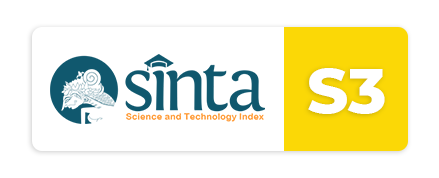Post-Vegan Leather Dengan Bio Polimer Sebagai Binder dan Serat Alam Sebagai Substrate
DOI:
https://doi.org/10.35886/patra.v5i2.525Keywords:
Post-Vegan leather;, Biopolymer, Material Driven Design (MDD)Abstract
Alginate (organic polysaccharide linear polymer found in brown algae/seaweed) and pectin found from fruit peel waste (such as oranges/oranges) as biopolymer based have been extensively explored to obtain materials such as leather, plastic and paper at the material proposal stage (development of the material). material in the lab test stage) which is carried out within the community and bio-lab. While the addictive characteristics of producing vegan leather have not been widely studied and studied in the scope of research and development to produce leather in the future, and the toughness of materials made from basic experimental processes is often answered by utilizing the structure of other components, both cellulose fibers, and synthetic adhesives that are used. Many large companies in the field of biotextiles/leather, to produce material performance that meets the needs of the properties of the material, therefore in this study also proposed the addition of natural fiber structure in improving the performance of post-vegan leather. thus producing a product that can apply concepts, design for hands-on material experience, this requires a critical understanding of what the material has to offer, in terms of functionality/utility and overall experience; how does it satisfy or disturb our senses, what does it mean?, the associations and emotions it evokes, and what makes us do it? Material driven design (MDD) (Karana et al., 2015) provides a step-by-step approach to designing a material experience, when a particular material is the starting point in the design process. By combining technical understanding and experience in the materials design process, the researchers argue that methods can inspire meaningful applications of materials. The Material Driven Design (MDD) method aims to support the design process when: a particular material is the point of departure in the design process. this travel method that when experience is to be expected in a material-driven design project, guidance from material properties and qualities to material visits in a broader context (purpose of existence); and from this material is re-experienced for the quality of experience and the nature of the material, and finally for the product. To think creatively in design materials, tinkering with materials—a kind of exploratory process of creation and evaluation—is required. Thus the MDD method states four main actions: (1) understanding the material, (2) creating a vision of material experience, (3) realizing patterns of material experience, (4) designing material/product concepts.












